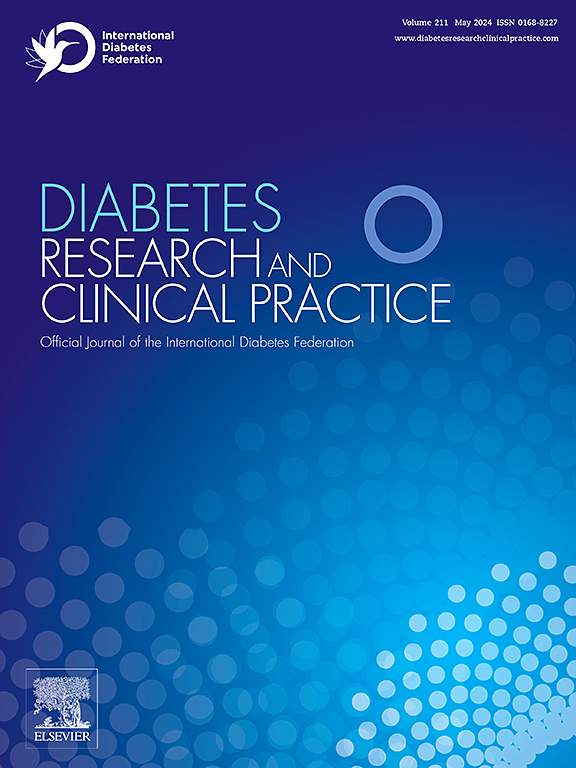The relationship between longitudinal changes in triglyceride-glucose-body mass index and new-onset diabetes in middle-aged and elderly adults: Evidence from a nationwide Chinese cohort study
IF 6.1
3区 医学
Q1 ENDOCRINOLOGY & METABOLISM
引用次数: 0
Abstract
Objective
This study investigates the association between changes in TyG-BMI and the risk of diabetes mellitus (DM) in middle-aged and elderly adults in China, as prior research has mainly focused on single baseline measurements.
Methods
Data were obtained from CHARLS, a nationwide prospective cohort study. TyG-BMI changes (2011–2015) were analyzed using K-means clustering. Cox proportional hazards regression models assessed the relationship between TyG-BMI changes, cumulative TyG-BMI, and DM risk, with sensitivity and subgroup analyses ensuring robustness.
Results
Compared to individuals with consistently low TyG-BMI (class 1), hazard ratios (HRs) for DM were 1.474, 2.250, and 3.142 for participants with moderately sustained and slowly increasing TyG-BMI (class 2), slowly increasing high level of TyG-BMI (class 3), and the highest and increasing TyG-BMI levels (class 4), respectively. △TyG-BMI2015-2011 (per 10-unit) yielded HRs of 1.064 for class 2, 1.108 for class 3, and 1.079 for class 4. Cumulative TyG-BMI (per 10-unit) had an HR of 1.029.
Conclusion
TyG-BMI changes and sustained exposure to high TyG-BMI levels are independently linked to increased DM risk. Monitoring long-term fluctuations in TyG-BMI could be an important strategy for preventing DM, and effectively controlling high TyG-BMI through various interventions may significantly reduce DM risk.
目的 本研究调查了中国中老年人TyG-BMI变化与糖尿病(DM)风险之间的关系,因为之前的研究主要集中于单一基线测量。采用 K-means 聚类分析了 TyG-BMI 的变化(2011-2015 年)。Cox比例危险回归模型评估了TyG-BMI变化、累积TyG-BMI和DM风险之间的关系,敏感性和亚组分析确保了稳健性。474、2.250和3.142。△TyG-BMI2015-2011(每10个单位)的HR值分别为:2级1.064,3级1.108,4级1.079。结论TyG-BMI变化和持续暴露于高TyG-BMI水平与DM风险增加有独立联系。监测TyG-BMI的长期波动可能是预防DM的重要策略,通过各种干预措施有效控制高TyG-BMI可显著降低DM风险。
本文章由计算机程序翻译,如有差异,请以英文原文为准。
求助全文
约1分钟内获得全文
求助全文
来源期刊

Diabetes research and clinical practice
医学-内分泌学与代谢
CiteScore
10.30
自引率
3.90%
发文量
862
审稿时长
32 days
期刊介绍:
Diabetes Research and Clinical Practice is an international journal for health-care providers and clinically oriented researchers that publishes high-quality original research articles and expert reviews in diabetes and related areas. The role of the journal is to provide a venue for dissemination of knowledge and discussion of topics related to diabetes clinical research and patient care. Topics of focus include translational science, genetics, immunology, nutrition, psychosocial research, epidemiology, prevention, socio-economic research, complications, new treatments, technologies and therapy.
 求助内容:
求助内容: 应助结果提醒方式:
应助结果提醒方式:


